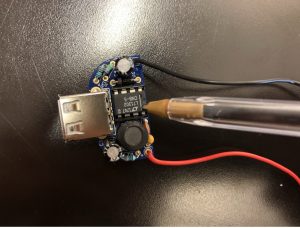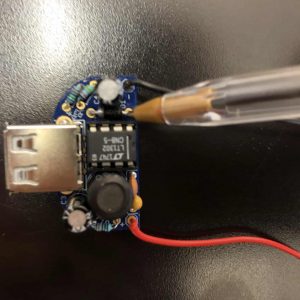Power-Up the motor and let’s roll: MintyBoost and RC Tank
My name is Alex and my main project is the RC tank. This project was a good way to dive into the electrical and mechanical engineering. I learned how to solder and use the proper codes to move a RC tank. It might look simple but it was complicated because it required everything to be perfect. I say that this project was worth it to finally see something that I made work.
Engineer
Alex A
Area of Interest
Civil/ Aerospace engineering
School
Lafayette College
Grade
Incoming Freshman
Third Milestone
My third Milestone was combining the two milestones together to move the tank. Since the first milestone was to move the motor automatically and the second was getting the PS2 controller to work, I combined the two together to make the controller to move the motor forward. Since using the code “motor.forward” and “motor2.forward” makes the motors go forward and “if(ps2x.Button(PSB_R2))” and “if(ps2x.Button(PSB_L2))” makes the computer recognize that the Right/ Left Bumper is being pressed, I combined the two codes together to get the motors to move forward when I press both Bumpers.
Second Milestone
My second Milestone was not moving the tank with the PS2 controller but it was making the Arduino recognize the controller. Although it was not my intention to make this my second Milestone, it did require deleting a lot of codes, trials, and googling. I did this with the help of Ari and Noah, my classmate in the program. The problem was that I downloaded the wrong PS2 library and it wasn’t in the Arduino library so that it could be recognized. I solved this by deleting the whole Ps2 library off my computer and re-downloading the right one. It finally worked because when I opened the Serial Monitor, it was showing the buttons I was pressing.
First Milestone
My first Milestone was getting the 2 motors to move by using Arduino. After finishing making the double gearbox and the chassis, I moved on to the coding portion. Although it does not involve physical labor, it does involve mental labor of trial and error. At one point I managed to move only one motor and then partially both until 2 days later, both motors drives were moving simultaneously. Although the tracks needed to be tidied up (because the wheels were not picking up the tracks fully), this was a good step in the right direction.
Overview #2


Starter Project
MintyBoost
For my starter kit, I worked on the MintyBoost, a miniature version of a portable charger. Although not as strong as a portable charger sold in stores, the MintyBoost gives the phone just enough juice to charge a little bit of it. The 2 AA batteries, with a total of 3v, manages to power the phone with the help of the inductor, the 2 capacitors, and the chip found in the middle of the circuit board, creating at least 5v to power the phone.
This project is a good start if you want to know how to solder and learn how to research how a component works. With the research I did, I could not just understand what I made but also learn how to explain my project, an essential trait in being a good engineer.
Sooo… How it works?
Understanding what is what
Battery

Although simple to assemble, the MintyBoost relies on 4 parts for it to work: the capacitors, the inductor, the 5v boost converter chip, and the batteries.
10 uH power inductor

Power Supply Capacitors











